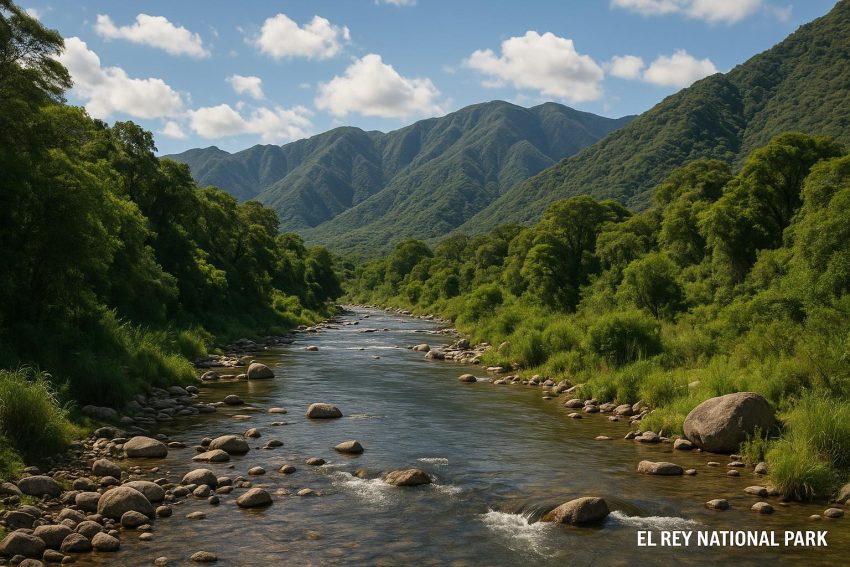Overview of El Rey National Park
El Rey National Park, located in the northwest region of Argentina, is a crucial protected area that was established in the year 1948. Situated within the province of Salta, the park encompasses approximately 44,162 hectares. It is renowned for its rich biodiversity and varied landscapes, which offer a remarkable representation of several ecological zones. These zones include the yungas, or mountain jungles, along with subtropical forests and mountainous terrains.
Historical Context and Establishment
The establishment of El Rey National Park was part of a broader effort to conserve and protect Argentina’s natural landscapes and biodiversity. Post World War II, many countries recognized the importance of their natural resources and began creating national parks to preserve them for future generations. The park’s creation in 1948 aligns with Argentina’s commitment to environmental conservation, ensuring that the unique ecosystems within El Rey are protected and sustained. Over the years, the park has been a focal point for conservation efforts and environmental education.
Geography and Climate
El Rey National Park is strategically located in a transition zone between the Andes Mountains and the Chaco region. This geographic positioning results in a diverse topography that comprises a mix of hills, valleys, and rivers. Visitors to the park can experience a variety of landscapes that showcase the beauty of both the mountainous and lowland regions of Argentina.
The climate of El Rey National Park is typically subtropical, characterized by a distinct division between wet and dry seasons. The wet season, which extends from November to April, brings substantial rainfall, nourishing the park’s diverse ecosystems. Conversely, the dry season runs from May to October, offering a different, yet equally captivating, experience of the park’s landscapes. Visitors should plan their trips according to these seasonal variations to enjoy the park at its finest.
Flora and Fauna
The lush and varied habitats within El Rey National Park support an impressive array of plant and animal species. The dominant vegetation in the park includes dense forests comprising cedar, myrtle, and laurel trees. Additionally, the park is home to several palm species, ferns, and an assortment of flowering plants, adding to its botanical diversity.
In terms of fauna, El Rey National Park is a sanctuary for a multitude of mammalian species, including the majestic jaguar, the gentle tapir, and the elusive puma. The rich biodiversity extends to the avian population, making the park a haven for birdwatchers. Notable bird species residing in the park include the powerful harpy eagle, vibrant toucans, and a variety of parrots, each contributing to the park’s colorful and dynamic tapestry of life. The park also provides habitat for several reptile and amphibian species, further showcasing its ecological richness.
Conservation and Research
Conserving the ecological integrity of El Rey National Park is paramount, and numerous efforts are in place to support its biodiversity. The park serves as a hub for various research initiatives aiming to study and understand the complex ecosystems it harbors. These research projects are critical for monitoring the status of endangered species and implementing effective conservation strategies.
Conservationists are actively working to mitigate the impact of illegal hunting and logging within the park’s boundaries. These activities pose a significant threat to the wildlife and natural resources that the park aims to protect. By addressing these challenges, El Rey National Park can continue to serve as a vital sanctuary for its diverse array of wildlife.
Visitor Information
El Rey National Park offers a wealth of opportunities for visitors seeking to immerse themselves in its natural beauty. Hiking is one of the most popular activities, with numerous trails that wind through the park’s scenic landscapes, allowing visitors to explore its diverse ecosystems up close. The park’s reputation as a premier site for birdwatching draws enthusiasts from around the globe, eager to glimpse its diverse avian species. Wildlife photography is another activity that attracts visitors, providing ample opportunities to capture the park’s majestic flora and fauna in their natural habitat.
It is important for visitors to be aware that access to certain areas of the park may be restricted. These restrictions are in place to protect sensitive habitats and ensure the ongoing conservation of the park’s ecosystems. Prospective visitors are advised to check with local authorities or a trusted source on El Rey National Park to obtain the latest information on park access, guided tours, and any regulations that may be in effect.
Visitors are encouraged to respect the park’s natural environment by adhering to established guidelines, ensuring that their activities leave minimal impact on the ecosystems. In doing so, they can help preserve the park for future generations to enjoy.
Conclusion
El Rey National Park stands as a significant ecological reserve, providing a glimpse into Argentina’s exceptional natural beauty and diverse wildlife. By adhering to responsible tourism practices and supporting ongoing conservation efforts, visitors play a critical role in the ongoing protection and sustainability of this remarkable natural area. Through collective stewardship and dedication to preserving the park’s unique landscapes, El Rey National Park can continue to flourish as a sanctuary for both nature and humanity.

